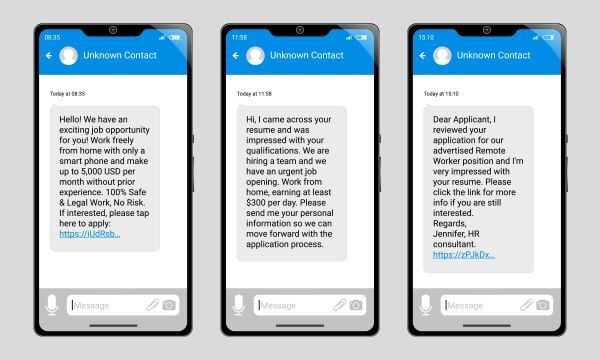Although many of us have learned how to recognize scams, bad actors remain persistent and continue to send various fraudulent messages to our devices. Most of the time, they don’t care if the scam attempts are obvious or sophisticated, their main intention is to fatigue you to the point of becoming flustered and making a rushed decision to trick you. Some scams are isolated incidents, some are nationally present happening to your friends, family and coworkers.
Over the weekend, I received a text message on my personal cell phone from a ‘First Name-Last Name-###@RandomOrganization.org’.
The first thing I noticed right away was how detailed, long, and grammatically formatted the text was upon viewing. Usually, a lot of scam messages feel urgent. They’re trying to create an emotional response, utilizing that heightened state to influence victims to their CTA of malicious links. Mimicking an automated promotional SMS message businesses provide for their patrons that sign up to receive a discount. Seeing the message’s length, it is possible it can come off as legit before reading the contents within.
The second factor I noticed was the message coming from a random organization, stated within the message that they were from the Massachusetts Department of Motor Vehicles (DMV). These two did not match and that was my first indicator that this was a smishing attempt using the DMV to take aback trick anyone receiving the message. While I may have known the first indicators as someone new to cybersecurity but practices good cybersecurity hygiene, let’s continue the remaining text to dissect how to further identify this smishing attempt.
Technology Advisor Blog
0 Comments Click here to read/write comments
Tags: Monitoring, cybersecurity, cybersecurity training, Cybersecurity, Smishing
.png)
